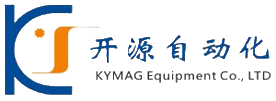The Structure Of Permanent Magnet Synchronous Motor
2024-09-30
The permanent magnet synchronous motor is mainly composed of components such as stator, rotor, and end cover.
Stator: The stator is the stationary part of a permanent magnet synchronous motor, mainly composed of the stator core, stator winding, and frame. The stator core is the skeleton of the motor, usually made of stacked silicon steel sheets, with good magnetic properties and mechanical strength. The stator winding is the power input part of the motor, usually using three-phase winding, divided into star connection and delta connection. The stator winding generates a rotating magnetic field through current, driving the rotor to rotate. The base is the supporting part of the motor, usually made of cast iron or cast aluminum material, with good rigidity and heat dissipation performance.
Rotor: The rotor is the rotating part of a permanent magnet synchronous motor, mainly composed of a rotor core, permanent magnets, and rotor shaft. The structure of the rotor can be divided into two types based on the position of the permanent magnet: protruding and built-in. The magnetic circuit structure of the protruding rotor is simple and the manufacturing cost is low, but it cannot achieve asynchronous starting. The magnetic circuit structure of the built-in rotor mainly includes radial, tangential, and hybrid types. This structure helps to improve the power density and overload capacity of the motor itself, and is easier to achieve weak magnetic expansion.
End cap: The end cap is a part of the motor that is used to seal both ends of the motor, providing protection and support. End caps are usually made of metal materials, which have good strength and corrosion resistance.
Permanent magnet synchronous motors have the advantages of simple structure, high efficiency, and high power density due to the use of permanent magnets for excitation, without the need for excitation current or excitation losses. In addition, the elimination of the collector ring and brush improves the operational reliability and maintenance convenience of the motor.
Recommended News







